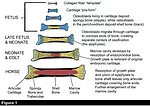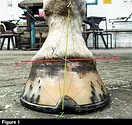Advertise Follow Us
Articles Tagged with ''biomechanics''
Equine Reciprocating Systems: Connecting Tendon to Bone
The third installment of this series examines bone formation and its relationship to the muscle tendon
Read More
Strategies for Correct Biomechanical Function
English farrier discusses techniques to help horses compensate for conformational issues
Read More
Changing Forces And Tensions
Establish clear goals and understand how altered angles will affect structures before choosing wedges
Read More
Research Journal: April 2016
The information, ideas and opinions expressed are those of the author and do not necessarily represent those of the United States Department of Agriculture.
Read More
Research Journal: January/Febreuary 2016
The information, ideas and opinions expressed are those of the author and do not necessarily represent those of the United States Department of Agriculture.
Read More
Considerations For Successful Management Of Underrun Heels
Two veterinarians and a farrier survey considerations for addressing this foot condition
Read More











